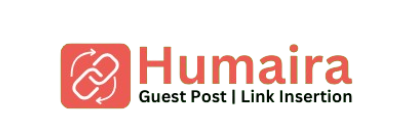In the competitive world of Software-as-a-Service (SaaS), companies strive to deliver seamless user experiences, maintain high customer retention rates, and optimize operational efficiency. Six Sigma, a data-driven methodology designed to improve processes by minimizing defects and variability, is traditionally associated with manufacturing and production. However, its principles are highly applicable to the SaaS industry as well. Let’s explore how Six Sigma can be leveraged in SaaS to improve service quality, reduce operational inefficiencies, and enhance customer satisfaction.
Understanding Six Sigma
Six Sigma is a methodology focused on achieving near-perfection in business processes. Its primary goal is to limit defects to 3.4 per million opportunities, ensuring a high level of quality. This is achieved through two key methodologies:
- DMAIC (Define, Measure, Analyze, Improve, Control): Used for improving existing processes.
- DMADV (Define, Measure, Analyze, Design, Verify): Used for developing new processes or products.
Both methodologies emphasize data analysis, root cause identification, and systematic process improvement, making them adaptable to industries beyond manufacturing.
Why Six Sigma is Relevant to SaaS
Unlike traditional manufacturing, SaaS businesses deal with intangible products, recurring revenue models, and dynamic customer needs. Despite these differences, Six Sigma principles align well with SaaS objectives:
- Focus on Quality: SaaS companies must deliver reliable software that meets or exceeds customer expectations. Bugs, downtime, or performance issues can lead to churn.
- Data-Driven Decision Making: SaaS companies generate vast amounts of user data, which can be analyzed to identify bottlenecks, optimize features, and enhance customer experience.
- Continuous Improvement: The iterative nature of software development and deployment aligns perfectly with Six Sigma’s philosophy of ongoing refinement.
Applications of Six Sigma in SaaS
- Reducing Downtime and Errors
SaaS businesses rely heavily on uptime and seamless user experiences. Six Sigma’s DMAIC process can help identify the root causes of downtime or errors. For instance:- Define: Identify the scope of the issue, such as frequent server crashes.
- Measure: Quantify the frequency and impact of the crashes.
- Analyze: Determine underlying causes, such as server overload or inefficient code.
- Improve: Implement solutions, such as server upgrades or code optimization.
- Control: Monitor performance metrics to prevent recurrence.
- Enhancing User Experience (UX)
Poor user experience can lead to high churn rates in SaaS. Six Sigma tools, such as Voice of the Customer (VoC) and process mapping, can help prioritize features and optimize workflows based on user feedback.- Example: A SaaS platform struggling with low adoption rates might use Six Sigma techniques to analyze user onboarding processes, eliminate unnecessary steps, and create a smoother experience.
- Streamlining Customer Support Processes
SaaS companies often face challenges in managing customer support requests. Six Sigma can improve these processes by identifying inefficiencies, such as long response times or repetitive queries.- Implementing automated ticketing systems or FAQs based on Six Sigma analysis can lead to faster resolutions and higher customer satisfaction.
- Improving Product Development
In SaaS, product development is an ongoing process. Six Sigma’s DMADV methodology can ensure new features or products meet customer needs efficiently:- Define: Understand the customer’s requirements.
- Measure: Assess current capabilities and gaps.
- Analyze: Design solutions to address gaps.
- Design: Create a prototype or beta version.
- Verify: Test and validate the solution before deployment.
- Optimizing Subscription and Billing Processes
Errors in subscription renewals or billing can negatively impact customer trust. Six Sigma methodologies can help SaaS companies ensure accuracy in these critical processes by automating workflows, improving payment gateways, and reducing manual errors.
Benefits of Applying Six Sigma in SaaS
- Increased Customer Satisfaction:
By reducing errors and improving user experiences, Six Sigma helps SaaS companies retain customers and enhance brand loyalty. - Cost Savings:
Eliminating inefficiencies in processes such as product development, server management, or customer support can significantly reduce operational costs. - Scalability:
As SaaS companies grow, standardized and optimized processes allow for smoother scaling without compromising quality. - Enhanced Decision-Making:
Six Sigma fosters a culture of data-driven decision-making, which is crucial in the tech-driven SaaS landscape. - Better Cross-Functional Collaboration:
Implementing Six Sigma often involves collaboration between different departments, fostering better communication and alignment within the organization.
Challenges in Adopting Six Sigma in SaaS
While Six Sigma offers numerous benefits, there are challenges that SaaS companies must address:
- Cultural Shift:
Transitioning to a Six Sigma mindset requires significant cultural change, especially in fast-paced SaaS environments. - Resource Investment:
Implementing Six Sigma requires time, expertise, and training, which can be resource-intensive for startups or small SaaS companies. - Dynamic Nature of SaaS:
The rapidly evolving SaaS industry requires agility, which may seem at odds with Six Sigma’s structured approach. However, combining Six Sigma with agile methodologies can overcome this challenge.
Final Thoughts
Six Sigma is not just for manufacturing—its principles can be effectively adapted to the SaaS industry to improve quality, reduce inefficiencies, and enhance customer experiences. By applying data-driven methodologies like DMAIC and DMADV, SaaS companies can achieve operational excellence and drive sustainable growth. However, successful adoption requires a clear understanding of both Six Sigma and SaaS-specific challenges. With the right approach, Six Sigma can be a powerful tool for SaaS businesses looking to thrive in a competitive market.

